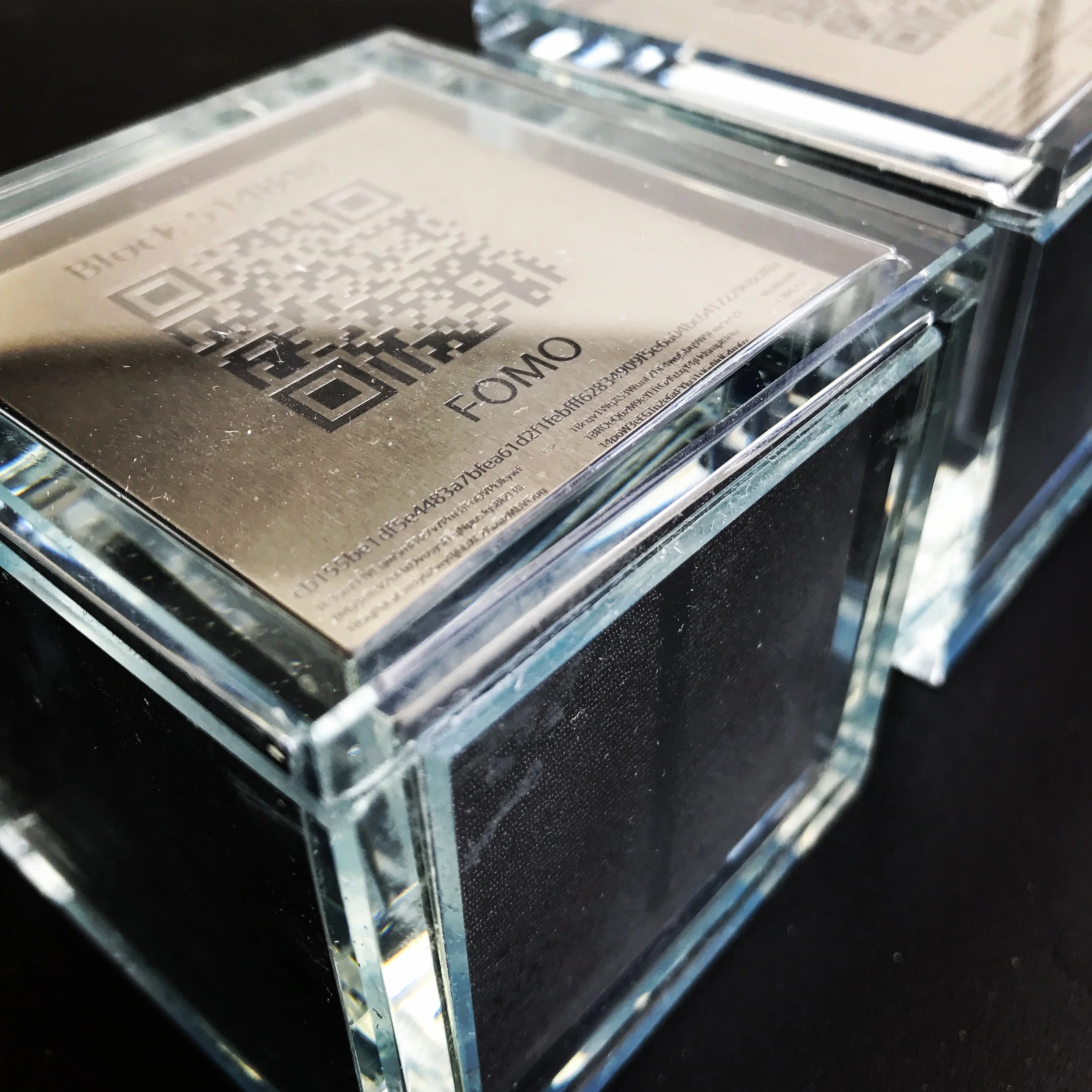
FUD & FOMO - The art project
FUD & FOMO is an art project by Eivind Kleiven exploring the concept - value of art. With this project Eivind propose a battle theory of value. The theory is expressed using two sculptures sharing a monetary value that can only be retrieved by destroying at least one of the sculptures. If one is destroyed and its monetary value withdrawn, then the monetary value of the remaining undestroyed sculpture will disappear immediately and only its value as art remains.
The proposition is that since both sculptures exist, then their value as art exceed the monetary value contained by them.
An interesting feature of the sculptures is that anyone may increase their monetary value by transferring Bitcoin to their engraved address. In addition, the value of Bitcoin may rise compared to other currencies. The sculpture’s monetary value can therefore increase and thus fight against their own existence as art pieces. Due to the volatile and uncertain future of Bitcoin their monetary value may also decrease or even be worthless in the future.
Value of art
This project confront the intrinsic value of the artwork against a monetary value. Most people would agree on the value of a 100 dollar bill. We know how much food or luxury it can be traded for. For example, you would be able to trade it for approximately 25 Big Mac’s. However, most people would not agree on the value of an art piece. Some people would pay thousands of dollars for an art piece while others would not pay or trade anything for it.
If an art collector buys a painting for 10 000 USD, then it is fair to claim that, in that moment, for that collector, the painting’s value as art or investment exceed 10 000 USD. One year later, the collector would probably still claim that the painting is worth 10 000 USD or maybe more even if there are no buyers. This may be based on prices for other paintings from the same artist, or perhaps it is just a personal opinion. In general, it is in the art piece owner’s interest to claim that the art piece is worth as much as possible, within reason. There is not much at stake for the owner.
“FUD Block 514848” and “FOMO Block 514848” force their owners to put their money where their mouth is. At any time, the owner of either one of the two sculptures can choose to destroy his or her sculpture and be rewarded with 0.8872 BTC. At the same time, the exact same amount would disappear from the other owner’s sculpture. That is, one owner loses the sculpture value as an art piece, but receive a monetary value. The other owner loses a monetary value, but keep his or her piece of art, which will be the only left of the two.
The sculptures
Each of the two sculptures is a metal cube encapsulated in glass. The metal cubes are 5x5x5 cm with weight equal to a corresponding cube of gold, about 2.4 kg per cube. The cubes are made of tungsten, a metal that is used by the mining industry due to its hardness. The reference to gold and mining is related to Bitcoin which is considered a potential gold substitute, and that Bitcoin is created through a process called Bitcoin mining where transactions are verified in what is called Bitcoin Blocks.
Laser engraving
On the four vertical sides of each cube, the transaction hashes of Bitcoin Block 514848 are engraved, and therefore the cube is a physical representation of Block 514848. This is the block containing the first transaction to the public Bitcoin address engraved on the cube.
The Bitcoin account
The top surface of the cubes is inter alia engraved with a QR code containing the Bitcoin address 14poW3eEGTn2e6xEYkcj1iJ6iAfdG4rq6v. This can be viewed as an account number that contains Bitcoin and which anyone can transfer Bitcoin to. In order to withdraw the monetary value of the bitcoin deposited at the address, one must have the private key, which is sealed under each of the cubes in a way that is difficult to forge. The only way to get hold of the private key is to destroy the artwork and break the seal. Thus, the owner of one cube will be able to destroy the artwork and then sell Bitcoin. The owner then loses the artwork, but gets a monetary value. The other owner will lose the corresponding monetary value, but will retain his or her artwork.
Their names are from the terms Fear, Uncertainty and Doubt (FUD) and Fear Of Missing Out (FOMO). These are terms often used in connection with investment to describe selling and buying behavior that drives prices up or down. Art are often investment objects and subject to FUD and FOMO. “You should buy this piece of art. This artist will be the next big artist!” and so on.
The private key is sealed inside a 200 NOK bill
The private key, which is necessary to withdraw the monetary value, is sealed inside a 200 NOK bill glued to the tungsten cube and glass. These bills are from the new banknote series issued May 2017 by the central bank of Norway. They have several advance security features which make them hard to forge. More information may be found here: https://www.norges-bank.no/en/topics/notes-and-coins/New-banknote-series/New-200-krone-note/.
The serial number of the 200 NOK bill inside FOMO is 2401224579 and the serial number inside FUD is 2401224580.
NDCode and VechainThor
FUD and FOMO are pysically linked to the VechainThor blockchain by use of NDCode. NDCode is an unique signature applied on the glass. The signature can be read by a NDCode-scanner and compared against information stored on the blockchain. Since neither the signature on the physical object nor the information on the blockchain can be altered or duplicated this may be used as an art authenciation.


